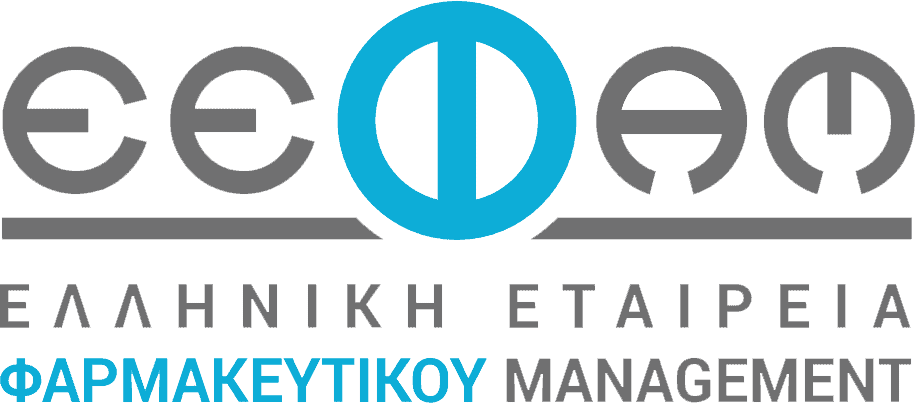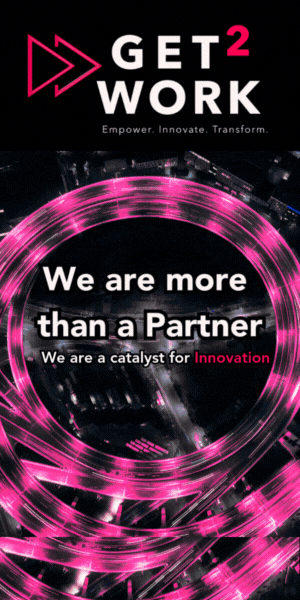Blog
Blog
Defining your ‘true north’: A road map to successful transformation

At every turn, companies are grappling with unprecedented disruption. At a time when macroeconomic and geopolitical turbulence has become the norm, and businesses are deeply technology dependent and globally entwined, yesterday’s recipe for success falls short of even ensuring survival tomorrow. The imperative to adapt, evolve, and transform is clear. But business leaders must also shift their mindsets and approaches if they are to create sustainable, transformative change and meet the demands of today’s hypercompetitive environment.
“Transformation,” a well-worn term in the corporate vernacular, has come to mean many things to many people, diluting its significance and leading to transformation fatigue. Many organizations have grown used to viewing transformations as short-term efforts to “cut the way to greatness.” Such undertakings lack clear connections to a business’s longer-term strategic priorities. In extreme cases, they can lead to shortsighted decisions that compromise an enterprise’s competitive position and even viability.
Real transformative change goes beyond episodic efficiency efforts or organizational restructurings. It instead aims to reprogram an organization’s very DNA and embed a new operating model, guided by a bold strategy, to reach a company’s full potential. When done right, a transformation becomes a source of continual renewal, evolving and even revolutionizing a business over a series of horizons.
In 2016, McKinsey laid out transformation elements in “Transformation with a capital T,” defining transformation as an intense program to significantly enhance performance (an earnings improvement of 25 percent or more, for example) and boost the health of the entire organization.1 Since then, our view has evolved. While cost reductions and operational excellence remain table stakes, best-in-class companies are expanding the scope of their transformations to include the reassessment and resetting of their strategies. They’re placing the focus on innovation and growth to take enterprise-wide performance to a new level.
Best-in-class companies are expanding the scope of their transformations to include the reassessment and resetting of their strategies.
To achieve this bigger impact, a transformation must be guided by what a company wants to become—a bold aspiration encapsulated in its strategy. This strategic “true north” should then determine the sequence of initiatives, along with the performance metrics used to track them, across four distinct work streams: cost optimization, growth, organizational effectiveness, and digital enablement. Finally, business leaders must fully integrate the transformation approach into the company’s day-to-day operations. This means making the transformation the new business as usual rather than treating it as a limited-scope side project.
Treating strategy as the true north
In McKinsey’s early experience in transformation work, going back to 2010, the majority of efforts revolved around delivering rapid performance improvement at companies facing significant operational and financial challenges. The focus was on survival—freeing up cash and resources to resolve liquidity and balance sheet issues. With cost efficiency as the primary aim, strategy rarely entered the discussion. Indeed, in the 2016 article, the word “strategy” appears only twice.2 Today, CEOs are expanding the definition of transformation, aiming to turn middle-of-the-pack performers into dominant industry titans. In these ambitious transformations, strategy plays a leading role.
In ambitious transformations, strategy plays a leading role.
As the scope of the transformation grows, the approach to execution must also change. Most successful change programs move through several distinct horizons over multiple years. With each horizon comes a set of objectives plus defined resources and investments in capability building. The full strategic agenda is also sequenced in stages. This helps ensure that the organization isn’t overburdened at the start, which could stifle its ability to deliver the rapid impact critical to building internal momentum, as well as external confidence and support.
While each transformation context is distinct, the journey often begins with a focus on stabilizing and improving the fundamentals of the business. This is followed by accelerating growth, organizational design, and digital enablement, all of which lay the foundation for a strategic and operational repositioning:
- Horizon one: all about the fundamentals (first three to 12 months). The priorities during this period are typically grounded in tactical improvements, including cost optimization, cash flow generation, and filling capability gaps. Speed is of the essence: our research shows that in successful transformations, initiatives executed within the first six months deliver 57 percent of the total program’s value.3 Companies must quickly prove to their boards and investors that their strategic plans have substance and can generate bottom-line impact. Being able to celebrate early improvements is also essential to building momentum and mobilizing the entire organization.
- Horizon two: growth and scalability (next 12 to 24 months). Having established early momentum, business leaders shift their focus from driving incremental improvements to fortifying their companies’ operating systems and setting up the conditions to fully realize the long-term strategic vision. Such initiatives typically have longer implementation road maps and timelines and substantial investment requirements. It’s critical to remain vigilant about timely execution and to validate impact. This is often the stage at which performance can regress, as the initiatives tend to be more complex and nuanced. Reacting quickly to correct the course as needed and invigorate the transformation plan with new ideas is essential to realizing the commitments and goals of the transformation.
- Horizon three: repositioning and reinvention (24 months and beyond). Achieving a company’s full potential typically involves a mix of specific actions executed in horizons one and two along with one or two strategy-guided big bets. These bets are likely to materially reshape, or even reinvent, the business over the longer term. Such initiatives might include geographic expansion, product innovation, or strategic M&A activity. This work requires a higher level of effort and resources than the first two phases do.
Setting out four performance work streams
We have learned over the past decade that companies have a better chance of reaching their full potential when transformations are directly linked to strategy. Companies should define the objectives based on an organization’s capabilities and performance across a set of impact and business reinvention metrics. The core transformation should focus on four aspects of performance:
- Cost optimization. Leading companies treat efficiency measures as merely a jumping-off point to the transformation—a way to free up capital to reinvest in the business. By eliminating waste and adjusting cost structure to support the vision of the future organization, the company can improve its operating margins while also generating the funds to invest in higher-ROI projects across the other three work streams.
- Growth. Our latest internal analysis suggests that more than 50 percent of transformation value comes from growth initiatives, up from less than 40 percent two years ago. Companies undertaking transformations need to set clear priorities for how and where they will pursue profitable revenue growth, looking at organic paths, such as launching new products or entering new segments; M&A; and business building. To support such moves, leaders should constantly monitor the return on growth investments and relentlessly reprioritize and reallocate resources based on demonstrated results. Committing to a bold growth agenda can not only reshape the performance trajectory of the business but also energize the organization to persevere toward the transformation’s broader goal.
- Organizational effectiveness. At its core, transformation is about people. In the more than 15 years that McKinsey has conducted transformation surveys, respondents consistently put getting the people part right among the top predictors of success. Additionally, internal analysis suggests that the likelihood of transformation success increases 3.2 times when the full organization is focused on the right priorities. This focus should go beyond rethinking the organizational chart. It should include thoughtfully challenging the status quo and creating a culture that is nimble, embraces cross-enterprise collaboration, and does it all with speed.
- Digital enablement. Technology plays a role in every successful transformation. At a time when 85 percent of companies believe that they need to build digital businesses or technologically enable their existing businesses to survive, strong digital capabilities are critical to staying competitive.4 Yet most organizations have been underinvesting in technology, particularly in the cloud, agile operating models, technology talent, and generative AI. This work stream requires establishing a state-of-the-art enterprise-resource-planning system that can facilitate the execution of all the other performance work streams. Leading companies focus on improving the accuracy and speed of information and developing new customer and product insights from their data. Those that use digital transformations to fully rewire their organizations improve their shareholder returns, P/E ratios, and returns on tangible equity more than competitors do, our research shows.5
The core transformation should focus on four aspects of performance: cost optimization, growth, organizational effectiveness, and digital enablement.
Consider one consumer product company that followed this four-work-stream path to chart a successful new course. Historically, it focused on incremental improvements as part of its annual planning cycle. But as nimbler competitors with stronger balance sheets rapidly gained market share, the company’s leaders realized they needed to fundamentally rethink how they operated. The company expanded its manufacturing footprint through acquisitions, revamped its production and logistics operations, and leveraged data to predict changes in consumer demand. It also empowered executives and line managers to adopt an owner’s mindset that raised individual impact on the business. The transformation doubled the company’s EBITDA while reestablishing its standing as an industry shaper.
Making transformation business as usual
It’s common to see a transformation achieve its milestones and stated objectives only to have the underlying business underperform, eroding the delivered value. Too often, management views a transformation as separate and distinct from day-to-day operations, failing to maintain the same high bar of rigor and accountability across the enterprise. We have seen companies tackle this issue head-on by leveraging the transformation as a catalyst for improving performance, essentially creating a new operating model that applies to each aspect of the business.
The integration of transformation and daily operations fosters a mindset of one goal and one mission. It encourages impact-based prioritization of initiatives and resources and ensures alignment across the organization through consistent messaging. To achieve this alignment, the operating model and the performance management system should serve as the hardwiring that links a company’s transformation goals to its strategy. Without clear KPIs, for instance, executives won’t be able to determine how or whether the transformation investments create value.
The operating model and the performance management system should serve as the hardwiring that links a company’s transformation goals to its strategy.
This approach requires a shift in the execution cadence under the leadership of a chief transformation officer (CTO). The role of the CTO was originally an extension of the CEO (perhaps even a possible successor), with full authority to work across the entire organization and guide the business agenda. Over time, the role’s scope has diminished, with CTOs now tending to be two or three levels below the executive suite, serving as process managers rather than true change agents. In that structure, the day-to-day operations fall outside the CTO’s purview, separating the transformation agenda from the ordinary course of business. Additionally, with the CTO having to run most decisions through a committee of more senior leaders, the pace and impact of the transformation slows.
We believe that the role should expand even beyond its original incarnation, turning the CTO into a chief performance officer focused on not only setting the transformation agenda but also integrating it into the daily business operations. The CTO should ensure, for example, that any governance process, supported by the CEO and cascaded throughout the organization, covers all business activities—transformation related or otherwise. A single set of metrics should cover the full scope of financial and operational performance.
The chief transformation officer role should expand into a chief performance officer focused on not only setting the transformation agenda but also integrating it into the daily business operations.
The experience of an industrial company with operations in more than 150 countries bears out the value of this approach. A messy merger, on top of hundreds of previous acquisitions, had created a highly fragmented organization that lacked a clear strategy. After a 30 percent slump in stock price over 18 months, the company decided to launch a transformation. The CTO mobilized the entire organization, from top leaders to more than 7,000 frontline employees, and implemented rigorous weekly performance checks.
The initial phase of the program delivered more than $2 billion in bottom-line impact, and the company is now in horizon two. Those who led the work in horizon one are serving as recruiting and coaching leaders for the next phase, helping pass on the lessons that they learned. The company’s free-cash-flow conversion has improved to 90 percent, from 60 percent. And the organization has gone from an industry laggard to a leader, with its share price outperforming those of its peers by roughly 20 percent.
In an environment of deep uncertainty, companies need to constantly monitor their competitive positions and evolve to match changing conditions. By ensuring that transformation objectives reflect business strategies, pursuing four core performance work streams, and staying vigilant about embedding the changes into business as usual, business leaders can reap long-term benefits from their transformation investments.
ABOUT THE AUTHOR(S)
Kevin Carmody is a senior partner in McKinsey’s Chicago office, Louisa Greco is a partner in the Toronto office, and Rob Montgomery is a partner in the Bay Area office.
The authors wish to thank Colleen Baum, Mary Lass Stewart, Meagan Hill, Michael Bucy, Michael Dillon, Rick Gold, Rob Cain, and Stephan Görner for their contributions to this article.
This article was edited by Joanna Pachner, an executive editor in the Toronto office.






